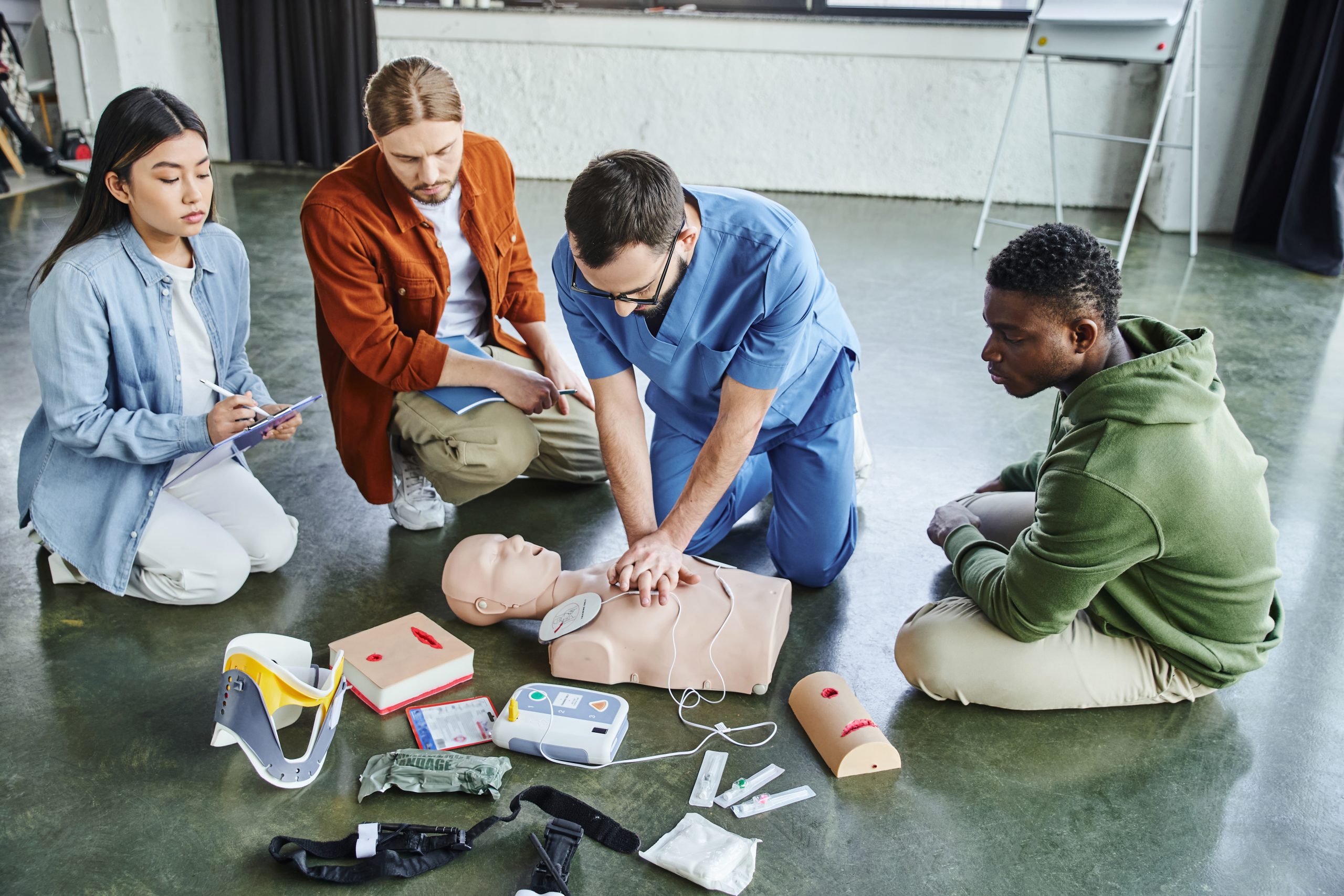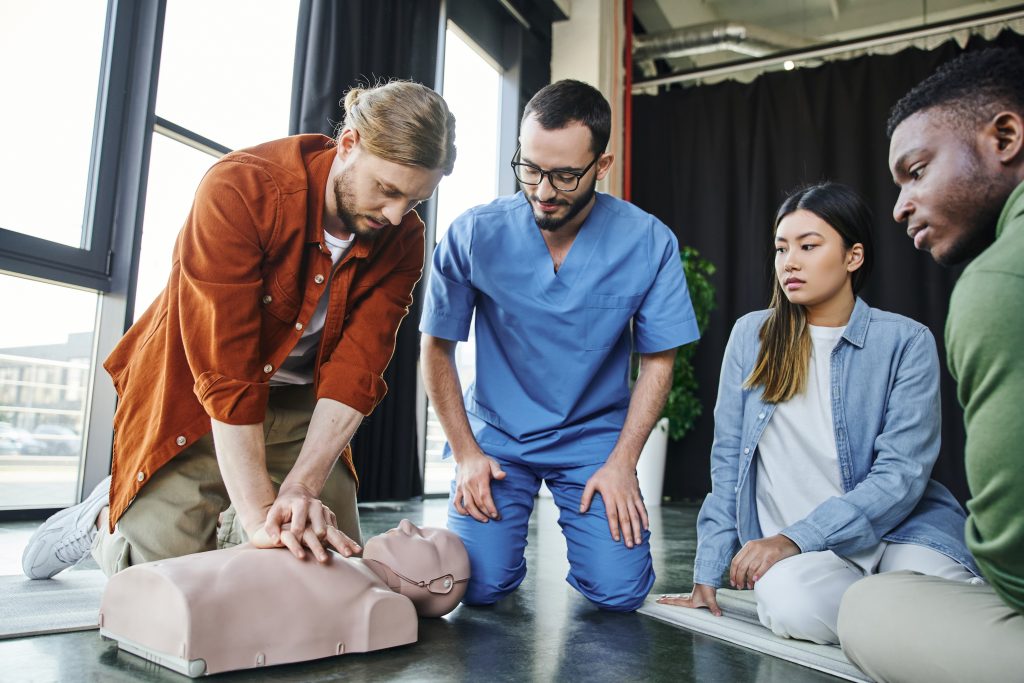
Maintaining your CPR certification is more than just a requirement; it’s a commitment to being prepared to save a life. In the fast-paced environment of the District of Columbia, where professionals and everyday citizens alike are dedicated to their roles, keeping your skills current is essential. Whether you’re a healthcare professional whose job depends on a valid certification or a lay responder who wants to be ready for an emergency, knowing the recertification process is key.
The rules and requirements for CPR certification can seem complex, especially when you factor in local regulations and different certifying bodies. This guide is designed to cut through the confusion. We’ll walk you through the specifics of CPR recertification in DC, so you can confidently renew your skills and maintain your readiness. We’ll cover everything from what recertification entails to the different types of courses available and how to choose the right one for your needs.
What is the Difference Between an Initial CPR Certification and Recertification?
This is a common question, and understanding the distinction is crucial. An initial CPR certification course is for someone who has never been certified before. It’s a comprehensive training program that covers all the foundational knowledge and practical skills from the ground up. These courses are typically longer and more detailed, as they assume no prior knowledge. You will learn the “why” and the “how” of every step in the process, from recognizing an emergency to performing chest compressions and rescue breaths. The initial course sets the stage, providing you with the full set of skills and understanding required to respond effectively.
Recertification, on the other hand, is specifically for individuals who already hold a current or recently expired certification. The primary goal of a recertification course is to refresh your memory, update you on the latest guidelines, and re-evaluate your skills. These courses are generally shorter and more focused. They often move at a faster pace, assuming you already have a working knowledge of the core concepts. The emphasis is on practical skills review and a written exam to ensure your knowledge is current. Think of it as a tune-up for your life-saving skills.
- Initial Certification: Comprehensive, longer, teaches fundamentals. For new learners.
- Recertification: Refresher, shorter, focuses on updates and skills review. For previously certified individuals.
For many professionals in DC, keeping their certification current is a mandatory part of their job. The recertification process is a streamlined way to meet this requirement without starting from scratch.

How Often is CPR Recertification Required?
The standard for CPR certification renewal is every two years. This is a guideline set by major accrediting organizations like the American Heart Association (AHA) and the American Red Cross. The two-year period is not arbitrary; it’s based on research and the need to ensure that life-saving skills remain sharp and up-to-date. CPR and emergency cardiovascular care guidelines are periodically updated based on new scientific evidence.
After two years, it’s easy for skills to degrade. Without regular practice, even the most critical skills like chest compression depth and rate can become less effective. The recertification cycle helps prevent this skill decay and ensures that everyone with a certification is operating with the latest and most effective techniques. It’s a system designed to maintain a high standard of care and preparedness.
It’s important to note that some employers or organizations in the District of Columbia may have their own specific internal policies that require more frequent training. For example, a hospital might require its staff to complete annual skills checks in addition to the standard two-year recertification. Always check with your employer or licensing board to confirm their specific requirements. However, as a general rule, plan to recertify every 24 months.
What is the Difference Between BLS and Heartsaver Recertification?
In the District of Columbia, as elsewhere, the type of CPR certification you need depends on your professional role. The two most common types are Basic Life Support (BLS) and Heartsaver. The distinction between the two is vital for recertification.
Basic Life Support (BLS) for Healthcare Providers:
This is the gold standard for healthcare professionals. BLS recertification is designed for individuals who work in a medical setting, such as nurses, doctors, EMTs, dental hygienists, and other allied health professionals. The course is more advanced and includes:
- Two-rescuer CPR scenarios.
- The use of a bag-mask device.
- Specialized skills like managing an airway with an advanced adjunct.
- Emphasis on team dynamics and communication in a resuscitation event.
The BLS recertification course is rigorous and ensures that healthcare providers can respond effectively to emergencies within a clinical or pre-hospital environment. It’s often a mandatory requirement for maintaining a professional license.
Heartsaver CPR AED:
This certification is designed for the general public, or “lay responders.” This includes teachers, coaches, fitness instructors, office workers, and anyone who wants to be prepared for an emergency outside of a medical setting. Heartsaver recertification focuses on:
- Single-rescuer CPR.
- How to use an automated external defibrillator (AED).
- Choking relief for adults, children, and infants.
- The course is less technical than BLS and is geared towards individuals who may be the first to arrive on the scene of an emergency.
When you go to recertify, you must choose the course that aligns with your original certification and your professional requirements. A healthcare provider cannot simply take a Heartsaver course and fulfill their recertification obligations.
Can You Take an Online-Only CPR Recertification Course?
The simple answer is no, you cannot obtain a fully online-only CPR recertification. This is a critical point to understand, especially in a city like DC, where official certifications are taken seriously. While online components are a key part of many modern training programs, a complete, valid certification requires a hands-on, in-person skills session.
Many providers, including the American Heart Association and the American Red Cross, offer a “blended learning” option. This is a very popular choice because it offers the best of both worlds: the flexibility of online learning with the essential hands-on component.
Here’s how blended learning works:
- Online Portion: You complete the cognitive part of the course online at your own pace. This includes watching videos, completing interactive modules, and taking a written exam. This part of the course covers all the latest guidelines and knowledge components.
- In-Person Skills Session: After you complete the online portion, you schedule and attend a hands-on skills session with a certified instructor. During this session, you will physically practice and demonstrate your skills on mannequins. This includes performing chest compressions, rescue breaths, and using an AED. The instructor observes your technique and provides feedback, ensuring you are competent.
This blended approach is widely accepted in the District of Columbia and fulfills the requirements for a valid recertification. It saves time in the classroom and allows you to practice at your own pace. It is the most efficient way to recertify while still meeting all the necessary requirements. Be wary of any company that promises a 100% online certification, as it will likely not be recognized or accepted by employers or licensing boards.
What Should I Bring to My CPR Recertification Course?
Once you’ve registered for a CPR recertification course in DC, you’ll want to be prepared. Being prepared ensures a smooth and successful experience. Here is a list of what you should typically bring with you to the class:
- Your Current or Recently Expired Certification Card: This is the most important item. The instructor will need to verify that you have a valid or recently expired certification to enroll you in a recertification course. Having this documentation ready saves time and prevents any issues.
- Your Online Course Completion Certificate: If you chose a blended learning option, you must bring the certificate of completion from the online portion of the course. Without this, you will not be allowed to participate in the skills check.
- A Photo ID: A valid government-issued photo ID is often required for identity verification.
- Comfortable Clothing: You will be performing hands-on skills that involve kneeling and physical exertion, such as chest compressions on a mannequin. Dress in comfortable, loose-fitting clothing that allows for easy movement.
- A Notebook and Pen: While much of the course is hands-on, you may want to take notes on any new information or tips provided by the instructor.
By having these items ready, you’ll be prepared for a successful and stress-free recertification experience.

Conclusion
Staying current with your CPR certification is a testament to your readiness and dedication to safety. In the District of Columbia, the recertification process is a straightforward path to renewing your life-saving skills. By understanding the distinction between initial certification and recertification, knowing the two-year renewal cycle, and choosing the right course for your needs (BLS vs. Heartsaver), you can ensure you remain certified and confident.
Remember, a valid certification from a reputable organization requires a hands-on skills session, so avoid online-only courses. Whether you’re a healthcare provider or a lay responder, staying certified means you’re always prepared to act in an emergency.
Ready to recertify? Don’t wait until your certification expires. Contact CPR Classes Near Me today to find a convenient and professional course in the District of Columbia. We offer the classes you need to stay current and confident.
FAQs about CPR Recertification in Washington D.C.
What is the expiration date on a CPR card?
Most CPR certification cards issued by major organizations like the American Heart Association (AHA) and the American Red Cross are valid for two years from the date of completion. The expiration date is printed on the card itself. It is highly recommended that you recertify before the expiration date to maintain continuous certification. If your card has expired, you may still be able to take a recertification course, but there may be a limited grace period. Check with your specific training provider for their policy on expired cards.
How long does a CPR recertification class take?
The duration of a CPR recertification class varies depending on the type of course and format. A traditional in-person recertification course is typically shorter than the initial course, often taking 2 to 4 hours to complete. If you choose the popular blended learning option, you will complete the online portion at your own pace, which can take a few hours. The in-person skills session for blended learning is usually a shorter, more focused session lasting around 1 to 2 hours. The total time for a blended course is often less than a traditional class because you complete the knowledge portion independently.
How do I find a CPR recertification course in the DC area?
Finding a CPR recertification course in the District of Columbia is easy. You should look for a certified training center that is affiliated with a recognized organization like the American Heart Association or the American Red Cross. You can use online search engines to find local providers. Make sure the provider offers the specific type of recertification you need, whether it’s BLS for healthcare providers or Heartsaver for the general public. Additionally, check their reviews and make sure they offer flexible scheduling options to fit your needs. Contact CPR Classes Near Me to find a course that works for you.
Do I need to be a healthcare professional to get CPR certified?
No, you do not need to be a healthcare professional to get CPR certified. CPR training is for everyone. While BLS certification is specifically for those in the medical field, a different type of certification, Heartsaver CPR AED, is designed for the general public, also known as “lay responders.” This course teaches the essential skills needed to respond to cardiac emergencies and is suitable for teachers, coaches, parents, and anyone who wants to be prepared to help in a life-threatening situation. Having CPR skills is a valuable asset for anyone, regardless of their profession.

Leave a Reply